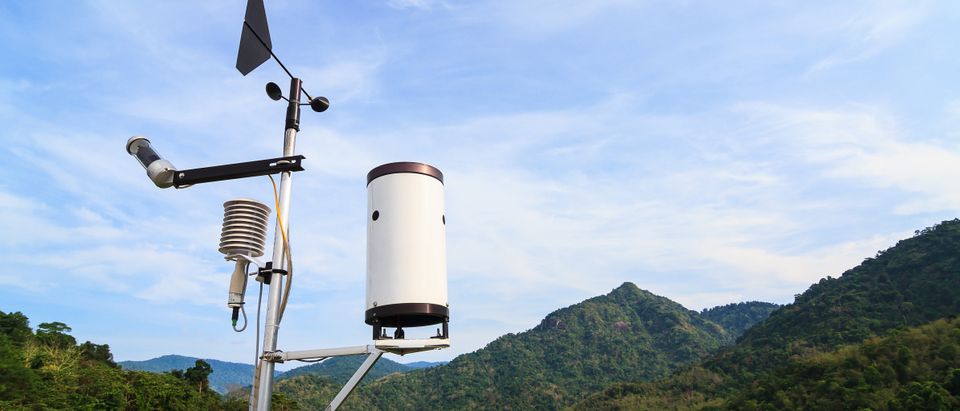A group of prominent scientists are calling for a global network of advanced weather stations that don’t need to go through controversial data adjustments, and it’s vindication for global warming skeptics.
Seventeen climate scientists co-authored a research article published in the International Journal of Climatology calling for a global climate station network modeled after the United States Climate Reference Network (USCRN) to use as a baseline for data quality.
“Already after 10 years, the USCRN has been used to validate United States annual surface air temperature anomalies as determined by homogenized standard network observations,” the scientists wrote.
The article, led by Maynooth University climatologist Peter Thorne, argued for a “suitably stable and metrologically well-characterized global land surface climate fiducial reference measurements network.”
For meteorologist Anthony Watts this is a big moment. Watts published research in 2015 that found scientists used “compromised” weather stations to make adjustments to U.S. temperature data that inflated the warming trend by as much as 50 percent.
“To me, this feels like vindication,” Watts wrote on his blog Watts Up With That. “For years, I’ve been pointing out just how bad the U.S. and global surface monitoring network has been.”
“We’ve seen stations that are on pavement, at airports collecting jet exhaust, and failing instruments reading high, and right next to the heat output of air conditioning systems,” wrote Watts.
Watts is a proponent of using the USCRN as a baseline for U.S. temperature measurements. USCRN is a network of 114 climate stations set up by NOAA to provide “high-quality” climate data that doesn’t need to be adjusted for “biases” in the temperature record.
Existing weather stations may have been around for decades, but they were set up to make daily temperature measurements that only needed to be accurate within a degree or two. Stations weren’t set up to study long-term changes in average temperature, and many have changed instrumentation, location and their environment, all of which affect temperature readings.
Thorne and his co-authors argue that while the long-term global warming trend is not changed much by local weather station problems, they can have a big effect regional temperature trends.
Adjustments to weather data, if done incorrectly, can have consequences for regional climate monitoring. Adjustments have also been a source of contention between global warming researchers.
“Now, some of the very same people who have scathingly criticized my efforts and the efforts of others to bring these weaknesses to the attention of the scientific community have essentially done an about-face,” Watts wrote.
“This is something both climate skeptics and climate alarmists should be able to get behind and promote,” Watts wrote.
However, Watts and Thorne’s team may have different motivations for wanting a more accurate climate monitoring network. Thorne and his colleagues argued for the new system as a way to measure progress of efforts to fight global warming, like the Paris climate accord.
NOW WATCH:
“This will aid future adaptation decisions and help us to monitor and quantify the effectiveness of internationally agreed mitigation steps,” reads the research article.
Follow Michael on Facebook and Twitter
All content created by the Daily Caller News Foundation, an independent and nonpartisan newswire service, is available without charge to any legitimate news publisher that can provide a large audience. All republished articles must include our logo, our reporter’s byline and their DCNF affiliation. For any questions about our guidelines or partnering with us, please contact licensing@dailycallernewsfoundation.org.


